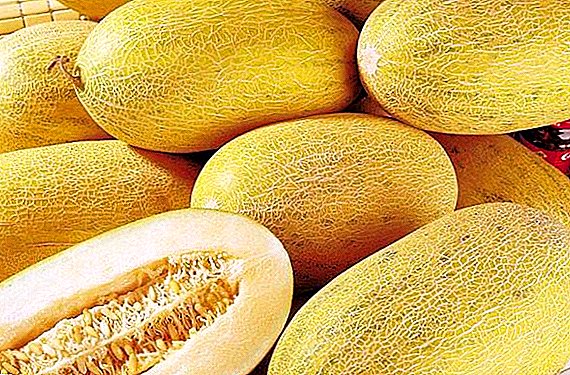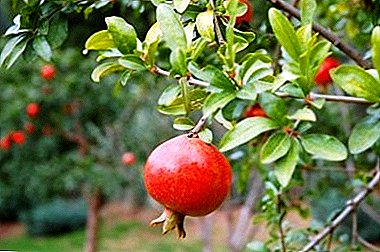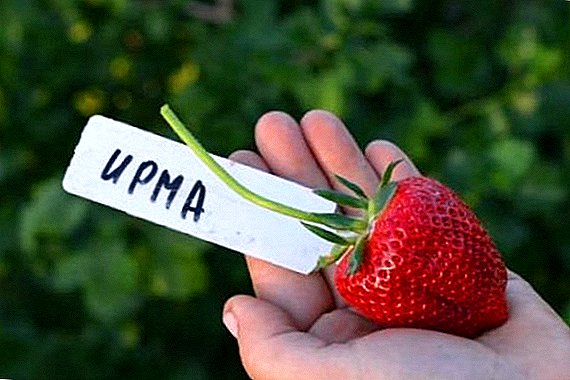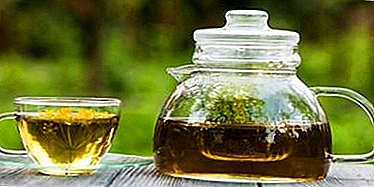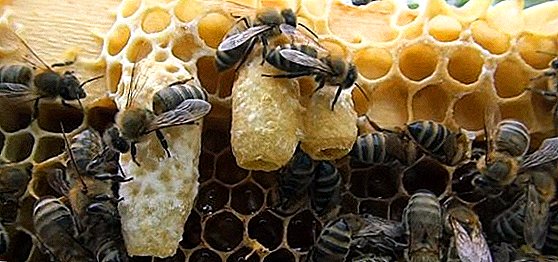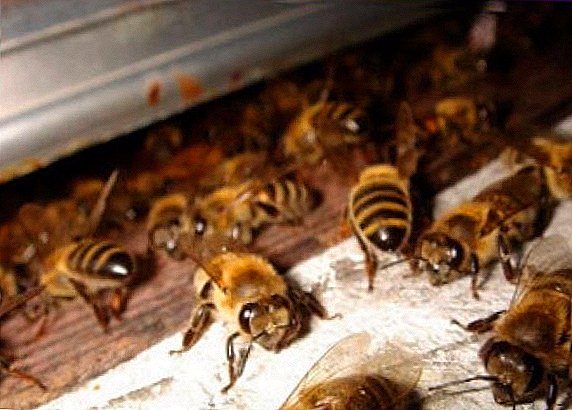 Proper balanced nutrition is a very important part of the daily life of animals that are not resistant to animal diseases like rabbits. Compound feeds are an excellent choice for those owners who want their pets to be fed not only with all the vitamins and minerals necessary for strengthening immunity, but also to gain weight rapidly.
Proper balanced nutrition is a very important part of the daily life of animals that are not resistant to animal diseases like rabbits. Compound feeds are an excellent choice for those owners who want their pets to be fed not only with all the vitamins and minerals necessary for strengthening immunity, but also to gain weight rapidly.
The advantages of using feed for feeding rabbits
Compound feed - is, in fact, dry food, produced in domestic or industrial environments. Choosing such type of food for rabbits, it is possible to provide them with a proper diet and a balanced diet. In addition, the combined feed has several other advantages:
- together with such food, the amount of proteins, minerals and vitamins that an rabbit needs to take per day for the healthy functioning of its body enters the body of an animal;
- if a monotonous diet can lead to a decrease in immunity, then feeding animals with combined feed, on the contrary, increases it, which is why they gain weight and get sick much less often than when feeding with monotonous food;
- feed is easy to use and cooking;
- combined feeds are generally inexpensive;
- the use of animal feed eliminates the risk of infectious diseases in animals, since this type of food, unlike natural food, is not affected by toxic fungi;
- Easy to store and transport.

The composition of feed for rabbits
Regardless of the pet's age, purpose, and gender, such food should include:
- bark and shoots of young trees;
- various root vegetables;
- corn;
- fresh grass and hay.
A balanced diet will help pets to develop properly and continue to be healthy and active. Find out whether it is possible to give a rabbit pumpkin, corn, bran, bread and cereals.
In all other respects, there are differences in the required composition of the feed, depending on whether it is an adult or young adult, it is grown for meat or fluff, etc. 
For setback stock
Combined feed for young stockers aged from 30 to 135 days, should consist of:
- 30% herbal flour;
- 19% from ground oats or wheat;
- 19% from crushed barley or corn;
- 15% from wheat bran;
- 13% from soybean or sunflower meal cake;
- 2% from fish or meat meal;
- 1% of hydrolyzed yeast and meat and bone meal;
- 0.5% from table salt;
- 0.5% of bone meal.
Did you know? The female rabbit has a forked uterus, which allows it to simultaneously bear two litters from different males.
For adults
The concentrate for adults should include:
- 30% oat and chopped wheat;
- 45% barley and ground corn;
- 12% wheat bran;
- 12% of cake and sunflower meal;
- 0.5% chalk;
- 0.5% salt.

For pregnant and lactating rabbits
In this case, it is important to provide enhanced nutrition, so the food of rabbits during pregnancy or feeding should consist of:
- 30% herbal flour;
- 20% barley;
- 20% oats;
- 13% sunflower meal;
- 12.5% wheat;
- 2% fish meal;
- 1% bone meal;
- 1% feed yeast;
- 0.5% salt.
It is known that during feeding the body of the rabbit is under increased stress. Read about how to organize the feeding of a nursing rabbit after a ball.
For fur
The recipe for feed for animal breeds is almost no different from the usual recipe feed for adults:
- 35% oat and chopped wheat;
- 40% barley and ground corn;
- 12% wheat bran;
- 12% of cake and sunflower meal;
- 0.5% chalk;
- 0.5% salt.

For meat breeds
For animals raised for meat, the feed should consist of:
- grass meal (40%);
- barley (30%);
- sunflower meal (10%);
- wheat bran (5%);
- peas (8%);
- hydrolysis yeast (2%);
- molasses (2.5%);
- meat and bone meal (1.4%);
- feed phosphate (0.8%);
- salt (0.3%).
You will certainly be useful to get acquainted with all the features of feeding rabbits at home.
Varieties
Compound feed for rabbits can be on sale in two most popular types: in granules or in a friable look. Consider the advantages and disadvantages of varieties of food.
Granulated
Among the advantages of granulated feed are the following:
- convenient to transport;
- can be stored longer than bulk food;
- granulation significantly reduces the amount of feed, reducing the surface area that may be adversely affected by microorganisms;
- easier to control the amount of food.

Loose
Most owners rarely use loose rabbit food, preferring granulated. The fact is that bulk food produces a lot of dust, which can cause lung diseases in animals. However, there are rabbit breeders who use this kind of compound feed.
Important! When giving food to rabbits, do not forget that animals must always have access to fresh and clean water throughout the day.
Giving such food as granulated food is better in feeders. It is preferable - in bunker feeders, so that food does not crumble in the cage. 
Daily rate
Differences in the nutrition of animals raised for meat or fluff, pregnant or lactating rabbits, adults or young individuals concern not only the components of the feed, but also its daily dose of food. So, per day:
- uterine specimens in the rest period should receive about 180 g of feed;
- uterine specimens during the period of mating - 230 g;
- pregnant rabbit - 170-180 g;
- lactating rabbits with rabbits, whose age is up to 10 days, should receive from 170 to 330 g of the combined feed;
- Rabbits with rabbits, whose age is 11-20 days, should receive from 190 to 440 g of food;
- Rabbits with little rabbits, whose age is 21-30 days, - 200-560 g;
- rabbits with rabbits, whose age is 31-45 days, - 230-700 g;
- young individuals whose age is 46-60 days, should receive 140 g of feed;
- rabbits aged 61–90 days — 205 g;
- individuals aged 90-120 days - 280 g;
- replacement young animals aged 120 days should receive 200 g of feed.

Is it possible to give rabbits
Since, as a rule, several species of animals are kept in one farm, the owners often confuse feed or do not bother to provide separate food for rabbits, chickens, etc. However, this may entail certain consequences.
Pork feed
There are no direct contraindications to feed the rabbit with feed intended for pigs, but if you do, you need to monitor the composition of the feed: it is important that such food does not contain a lot of dust and animal protein, because an excess of these substances is harmful to rabbits.
Rabbitheads should consider whether rabbits eat burdocks and wormwood.
Chicken
Chicken feed, in addition to other elements that are also in the composition of feed for rabbits, contains shell rock. This component does not benefit the rabbits. Moreover, eating chicken food, these animals receive less substances necessary for their growth and development. Therefore, in order for all pets to stay healthy, it is better to buy specialized food for each species. 
How to cook feed for rabbits yourself
In order to save, control the quality and freshness of the mixture, as well as to be able to regulate its composition, feed can be prepared independently.
For this you will need:
- Herbal Blend: pre-dried and shredded stalks of field plants.
- Cereals. Almost every type of grain can be used: barley, wheat, corn. You can also add beans: peas, soybeans, sunflower seeds.
- A small amount of animal and vitamin supplements: whole milk powder, meat and bone meal and fish meal, fodder yeast.
- Minerals: As a rule, use crushed chalk.
- Instruments: hay chopper, feed mill granulator (or meat grinder), mixer, drill.
 Use a hay chopper
Use a hay chopperCooking method:
- Pre-stock all the necessary ingredients in the right ratio (depending on which individuals such food is intended for).
- Grind cereals with a crusher or mixer.
- Combine all the ingredients together and stir well. To do this, you can use a drill, however, it is necessary to cover the tank with something so that the feed does not crumble while stirring.
- Add water to the mixture (in such quantity that it looks like dough by its consistency), stir again.
- Pass the mixture through the granulator (it allows you to determine the size of the granules) or the meat grinder (then it will take a long time to bring the granules into a condition suitable for the rabbit's teeth).
- Let the feed dry.
Seasonal differences in feeding
The diet of rabbits may differ not only depending on gender, age, etc., but also on the season. For example, in the fall, in addition to animal feed, it is necessary to give carrots to rabbits, cabbage leaves, beets, potato tops, turnips. And for winter feeding it is necessary to prepare pellets with a greater concentration of barley.
Grass is the main feeding element of rabbits. Find out which grass can be given to rabbits, and which is poisonous to them, and also read how to feed rabbits with hay.
Thus, mixed feed is a key component of the daily diet of rabbits, because it contains all the necessary animal substances for normal growth. You can prepare such food for your pets at home, which will save you a lot of money and give you the opportunity to monitor the quality and freshness of food.


